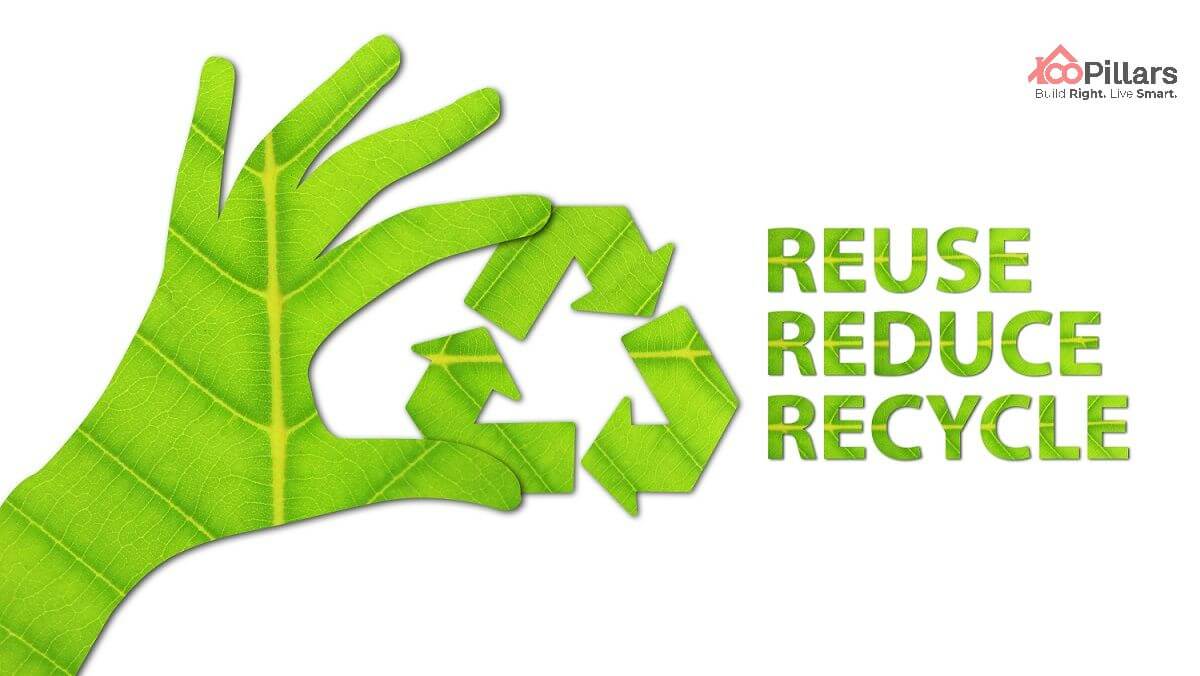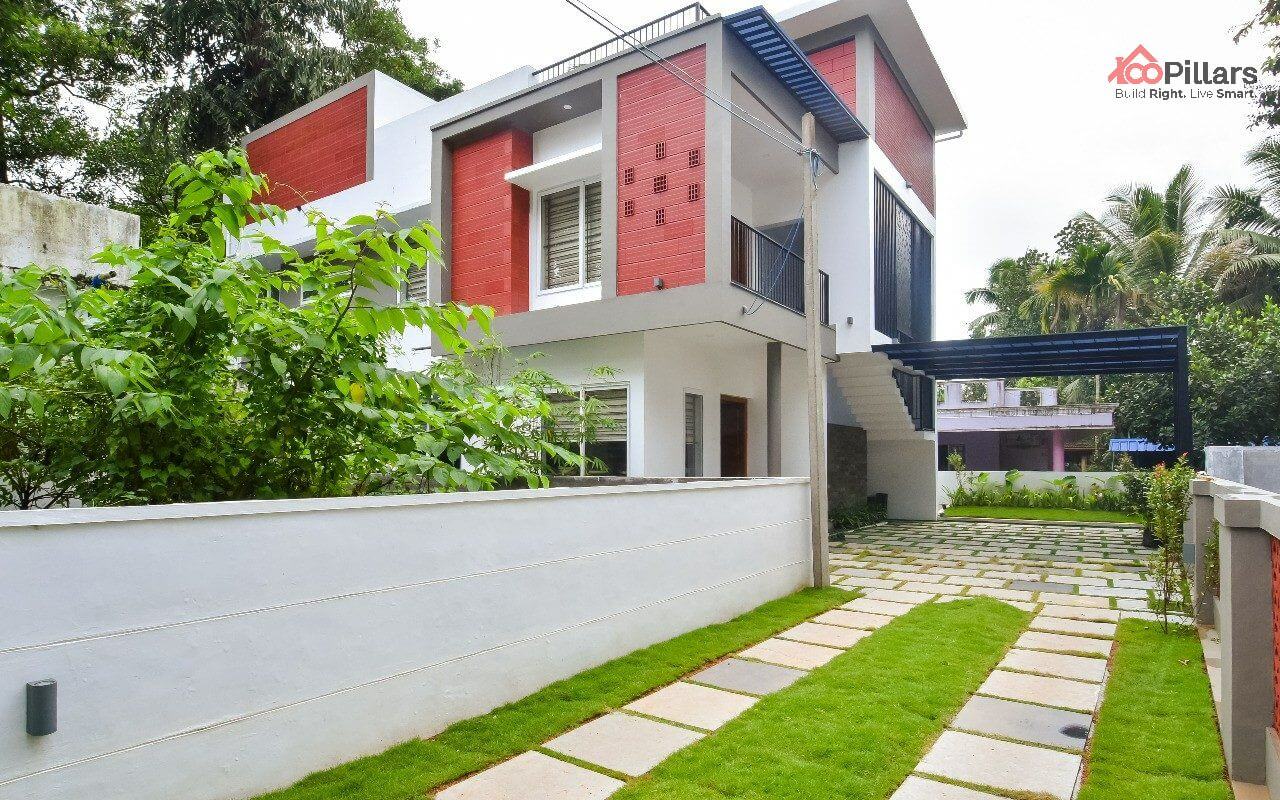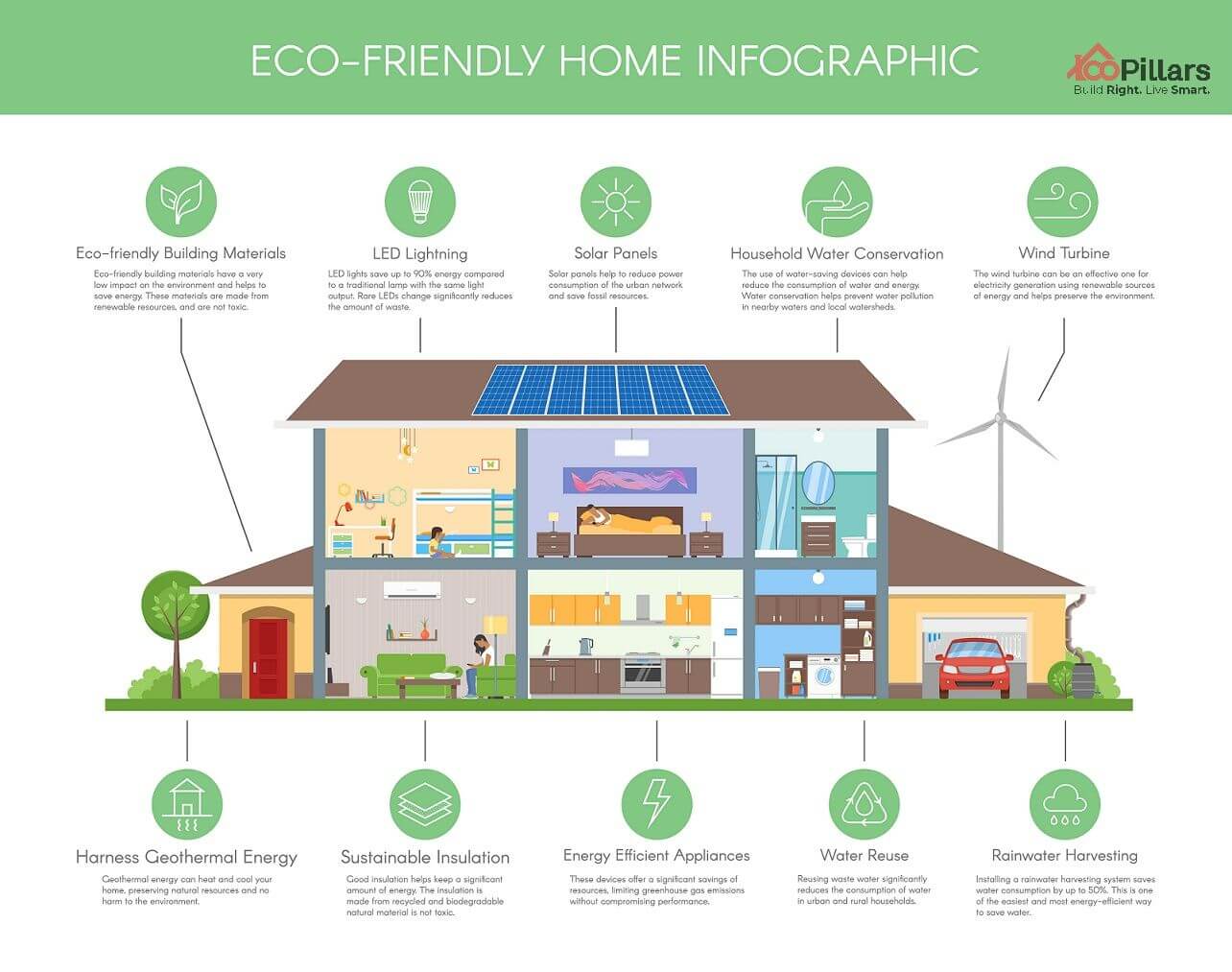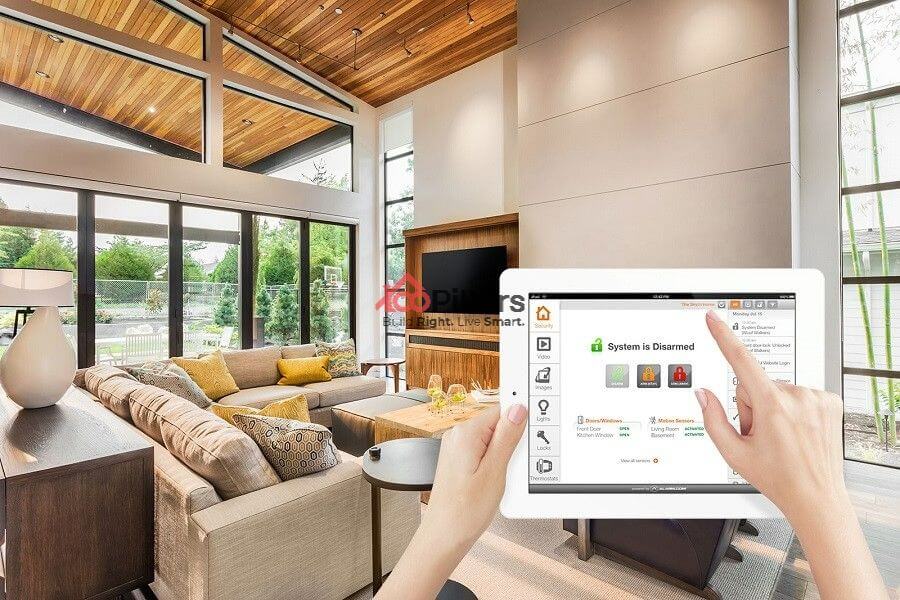The 21st century set in with a challenge that posed a serious threat to our future – climate change. Often associated with terms like global warming and carbon emissions, climate change has become a household topic across the world. But what households themselves don’t realize is how big an impact they have on climate change.
The typical Indian home has the unique potential to greatly reduce the carbon footprint it leaves behind. In the past our homes were designed to use resources readily available in our surroundings and exist in harmony with nature. Simply put, the homes of the past were naturally eco-friendly, but not so anymore.
This guide will talk about what a modern eco-friendly home is, how to build and maintain one, why they are important, how we can benefit from them, and most importantly about the factors and considerations to be made while constructing an eco-friendly house.
What Makes an Eco-Friendly Home?
An eco-friendly home or a building uses the least possible amount of natural resources, and produces minimal to zero waste, throughout its life cycle from construction to demolition.
Eco-friendly housing is a concept that is both deep and vast and the subject of constant study and innovation. So here we will skip past all that and break this down into 3 simple concepts.
Net Energy Plus
Every home consumes energy in various forms. The most common form is electricity. It powers your appliances, heating, air-conditioning, water pumps. Another source of energy is natural gas and LPG which is used for cooking, heating, etc.
An eco-friendly home tries to generate a part or all its energy requirements in-situ. This could be through solar systems that generate electricity and heat or biogas plants that fuel generators and replace cooking gas.
The idea is to depend as little as possible on traditional but unsustainable sources of energy to run your home.
Sustainability
“Reduce, reuse and recycle”. These are at the heart of any eco-friendly building. The key is to use these philosophies at every stage of your home’s lifetime. While there are several ways to do this, some of which we will cover along the way, keep these mantras in mind.

- Reduce dependence on natural resources and energy
- Reuse and reclaim everything you use to give it a longer lease of life
- Recycle everything possible from construction waste to food waste
If you can do these at every stage from building to running your home you already have the makings of a great eco-friendly home.
Efficiency
This is a concept that many of us fail to grasp fully. We’ll tackle this with an example.
Let’s assume that your home, in a vastly tropical-temperate country like India, requires 30 units of power from the supply grid to run air conditioners through the month. But you want to build an eco-friendly home so you decide to increase the capacity of your solar output to meet this requirement, driving up costs and consumption of resources.
You have achieved your goal of net energy plus but is this the efficient way of doing it?
Take a step back and think about it. You could have considered ventilating your home better to bring in cooler, natural air from the outside. Add to that material like blockwork, doors and glazed windows that can thermally insulate your home and you just efficiently reduced your air conditioning energy requirements by 50%.
That’s what building a home for efficiency is – getting it right in more than one way.
How Do you Build and Run an Eco-Friendly House?
Before we go on to explore ways to do this you need to remember three important realities:
- There is no one-size-fits-all solution.
- You can’t solve for everything.
- Thinking short term will cost you long term.
With that in mind, let’s get started.
Start with Efficient Design
There’s a golden proverb – well begun is half done. This is very much the case when building an eco-friendly home.
Location:
Look for plots that will allow you to orient your home optimally towards the sun. Depending on the climate you must aim to maximize or minimize natural heating while still providing maximum natural light.
Minimalism:
Estimate your space requirements practically. A smaller home is easier to build and maintain. It consumes fewer resources such as building material and reduces running costs from lighting to air-conditioning. Even cleaning a large home consumes more water, cleaning material and time. If you really think you need that second guest bedroom, think again.
Efficient Landscaping:
If you find a piece of land that has a lot of trees and green cover, you hit the jackpot. Uproot as few trees as possible and if you must try replanting them in barren patches. If you can’t have much green cover around you, use vertical spaces. Everything from your outer walls to your garage can support a vertical garden.
Consult with Experts:
Even with all the information that is readily available out there you still don’t have the benefit of expertise. The right consultant has the foresight and experience that you can leverage. They have access to ideas, concepts, solutions and resources that when employed early on can avoid do-overs and retrofits.
Choose the Right Materials
An eco-friendly home is a sum of its parts and choosing everything that goes into it with a keen and conscious eye will set you up for success.
Sustainable Materials:


This again is key to building an eco-friendly home. Everything from your roofing to flooring needs to be made of eco-friendly material. Remember sustainable doesn’t mean cheap or low-quality. Choose from a range of green materials available like fly ash, rammed earth brickwork, porotherm blocks, bamboocrete, laterite stone, recycled plastics and reclaimed wood. Airy interiors with lots of indoor plants, wicker furniture and reclaimed statement art pieces can give your house that raw, modern and contemporary look.
Proper Insulation:
Insulate rooms that you plan to keep air-conditioned. Choose energy-efficient and thermally insulating glazed windows. Minimize gaps around doors. Your roof can become a heat sink so use terracotta and green cover (think straw, barn, terrace gardens!) to insulate it.
Water-Saving Setups:
Water is the most consumed natural resource in our homes. Choosing showers, taps and faucets that deliver controlled flows is a great start. There are modern water closets that efficiently reduce water usage by up to 60% over the traditional ones. You must not think twice about investing in rainwater harvesting setups, recycling greywater and wastewater treatment plants.
Technology is Your Friend
Harness the Sun:

Being the most abundant source of energy this becomes a no-brainer. Invest in solar panels to offset your electricity consumption from the grid. If your budget doesn’t allow for a complete offset, invest in a small capacity that you can scale up in the future. Solar water heaters are also a budget-friendly solution that is also low maintenance.
Energy Efficient Equipment:
Install and use energy-efficient appliances. Focus on those that are used constantly like lights, fans and refrigerators. The next priority are those that consume a lot of energy per use cycle like washing machines, water heaters and air-conditioners. In India, the energy star ratings mandated by the Government are a great indicator of the appliance’s energy efficiency.
Smart Home Technology:
Making your home “smart” not only makes it more eco-friendly but also uber-cool. Smart home technology allows automating everything from your lighting and water pumps to remotely managing your appliances. Although the individual impact may be small, they add up incrementally in the long run and help you save energy and costs.
Running the Show
If you have checked most of the boxes above, you are off to a great start. The next part becomes relatively easy. Running an eco-friendly home.
Reduce Waste:
Don’t overlook this. But first, you need to revisit what you define as waste. Traditionally we have been tuned to look at waste as what is left over after use. In reality, wastage occurs even if you are underutilizing something. The concept of minimalism also plays an important role here.
Go Green:
Use and promote eco-friendly options always. This could be from something as basic as a detergent or floor cleaner to responsibly sourced fresh produce. Every small choice matters. A metal spatula has a larger carbon footprint than a wooden ladle so think before making a decision.
Generate In-situ:
Consider installing a residential biogas plant that uses refuse and organic wastes to generate fuel that can offset your cooking gas requirements. The byproduct is a great fertilizer for your little home garden or vegetable patch.
Why Should you Build an Eco-Friendly Home?
If you have got this far you are probably half sold on the idea of an eco-friendly home. A lot of the advantages are self-explanatory. The energy savings are evident, the cost savings make it an investment and overall it seems like the environmentally right decision to make. But, there’s more to an eco-friendly home than meets the eye.
Health Benefits
Your quality of living improves greatly in an eco-friendly home. You are exposed to fewer pollutants and carcinogens. You are breathing cleaner, fresher air and receiving ample natural sunlight. The psychological benefits of living in a greener home have been established through multiple scientific studies. You are happier, less stressed and this extends to everyone living in your home.
Your Property Value Increases
People are looking at homeownership as an experience. The modern-day dweller is looking for greener alternatives and sees the benefits of owning an eco-friendly home. A green home today is sought after and drives the valuation of your property unlike regular homes wherein the building itself is valued negligibly. Buildings with higher IGBC or LEED ratings are in demand.
Aesthetics
There is nothing that is more pleasing to the eye than natural beauty. An eco-friendly home can display so much character through its rustic charm and quaint features. Your home can become a living breathing entity that gives you a sense of pride and belonging not to mention a clean conscience.
Costs
Did we mention cost savings? We probably did but it’s worth mentioning again. An eco-friendly home almost pays for itself in the long run. While it requires more time and effort to build given certain specific requirements the actual setup costs are balanced out by the running costs leaving you with more savings.
Conclusion
Eco-friendly homes are the future, there’s no denying that. It is the only sustainable solution that can be employed at a grand scale to battle climate change, depletion of resources and a host of other problems that threaten the future.
If your dream home is an eco-friendly one you are doing yourself and the planet a great service. Be sure to talk to your architect and contractor to help you realize this dream. Choosing who you partner with as expertise in this field is still nascent can be very important.
Speak to the experts at 100Pillars Constructions for more on eco-friendly home concepts and you will realize why green is the new way to go!





